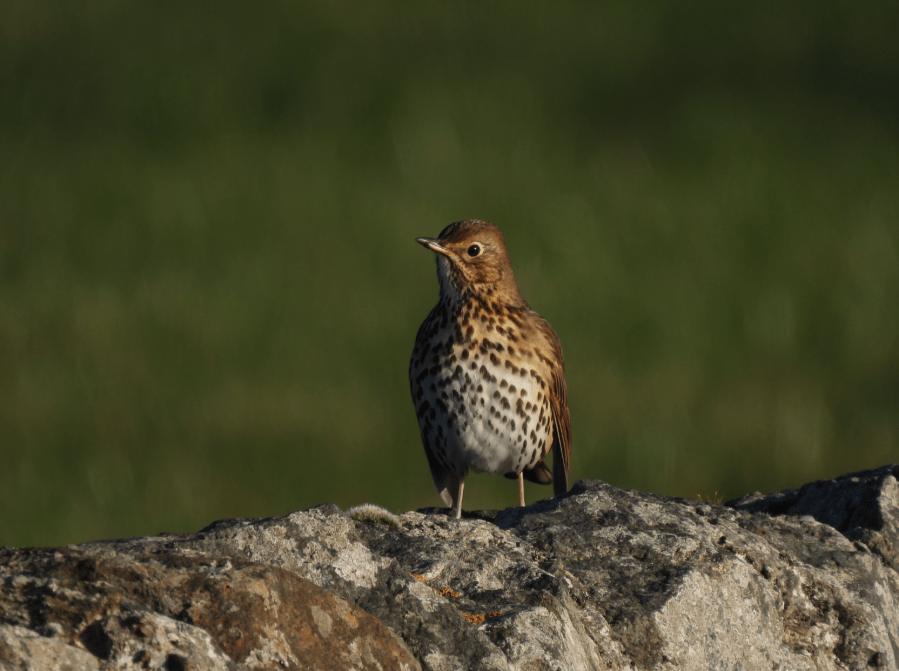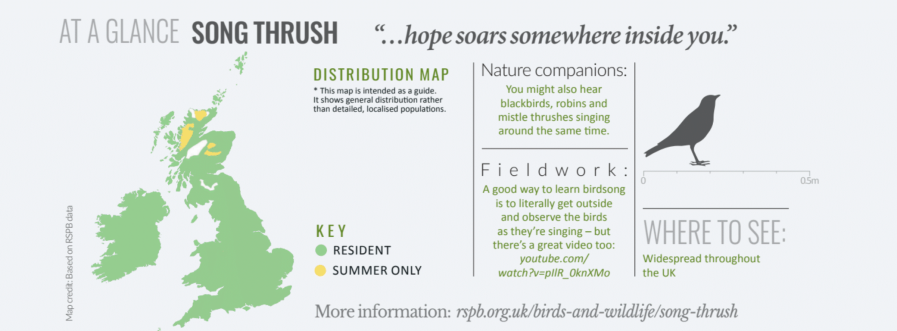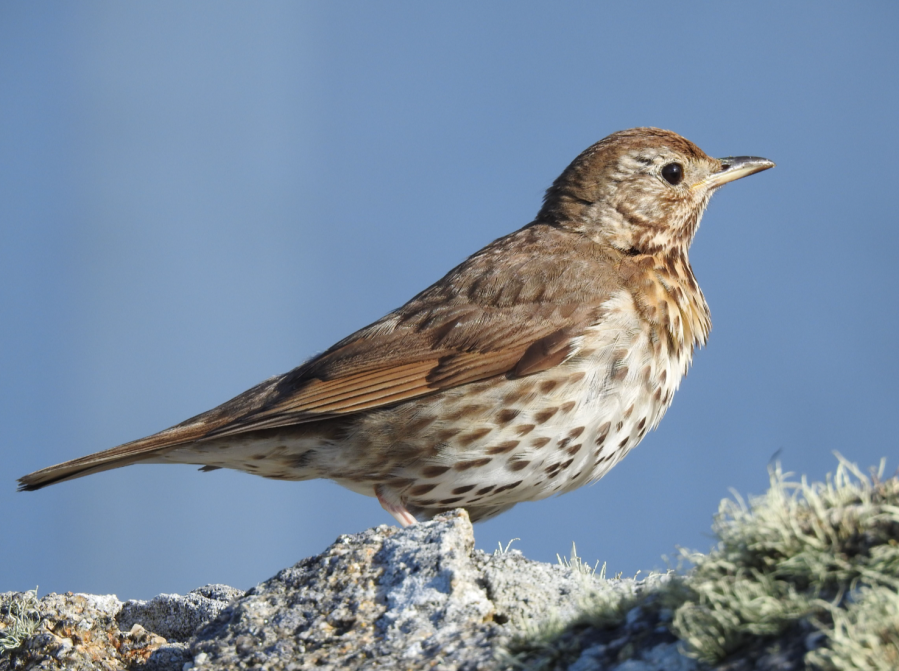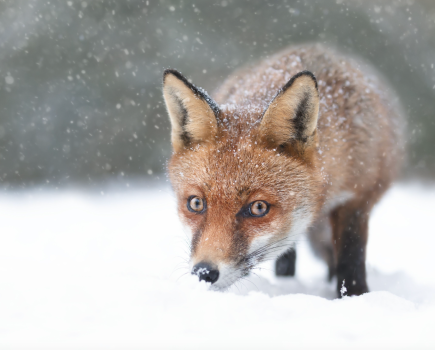Main image: The song thrush is worth waking up for | Credit: Sara Humphrey
Your alarm goes off and at first, you’re a bit confused. It’s very dark outside, there’s not even a suggestion of the sun meeting the horizon, just inky black. There’s condensation on the windows. Within seconds that feel like minutes, you realise that this isn’t a workday. You’ve decided to interrupt your slumber because you’re going on an adventure.
But its early March and despite breaking through the worst of winter, it is still very much winter, the temperature difference between the underside of your duvet and the rest of the room is unpleasant. You fight the urge to stay put and you get up because today you’re going to walk your walk or get up that crag.
Not fully awake, you stand at the kettle waiting for it to boil, or perhaps you’re outside in the dark packing your car, and then you hear it. As the rest of the world sleeps, you’ve been rewarded with the first inkling that spring is on the way, and the dark and chilly mornings will soon be a thing of the past. Whether you actively acknowledge it or not, hope soars somewhere inside you.

By mid-February the dawn chorus starts to build, slowly at first. Robins, Blackbirds and Dunnocks are the birds I usually notice first. But this year, it was the Song Thrush who truly helped me cast off the feeling of never-ending winter.
I don’t dislike winter, I gladly welcome frost and stillness and fires and resting, but there is a limit. It is always birdsong that pulls me out, like ice melt or snowdrops popping into existence.
The Song Thrush’s dawn vocal routine is stunning, which you’d expect given their name. Every morning from their favourite treetop, they repeat the same fluty phrases two or three times, and have a huge repertoire of different ditties. Because they sing before sunrise when everything else is quiet, their notes cut through the dark and cold like a knife, making it all the more beautiful.
The Song Thrush is about the size of a blackbird, which you’re probably more familiar with. They are warm brown on the back and speckled with dark spots which are scattered across their creamy breast feathers. They exhibit another brilliant bit of behaviour that I’d encourage you to look out for whenever you are outdoors.
They have a taste for snails and have fairly brutal way of getting to the tasty bit. They grip onto the snail shell with their beak and find a hard surface to smash them against by whipping their head back and forth.
What I particularly enjoy is that individual birds have favourite rocks, or ‘anvils’ that they use for snail extraction. You might be lucky enough to hear the satisfying tapping of shell on rock during the meal preparation process or spot a collection of broken shells of meals gone by.







